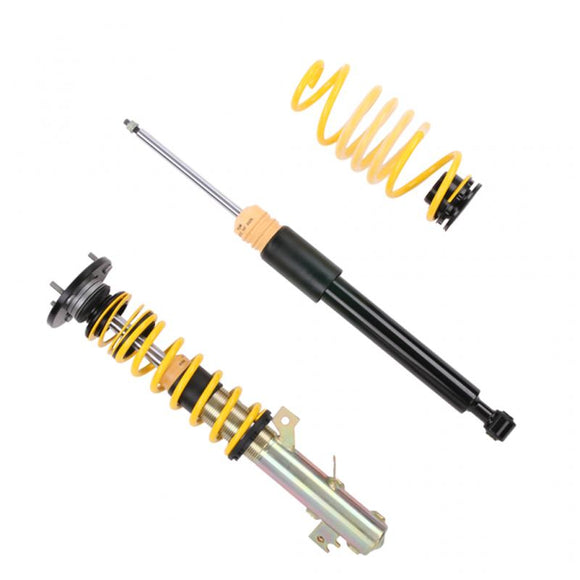ST XTA COILOVERS
For those who demand the absolute best performance comes the ST XTA coilover. The full driving behavior of your car can be adjusted using KW damper technology along with an adjustable aluminum uniball top mount for fine-tuning of the camber and caster!
Performance driving in mind
ST XTA coilovers feature KW damping technology which allows the suspension to be made either stiffer or softer depending on the driving conditions. This damping adjustment is made on the upper end of the chromed piston rod allowing the setup to be changed almost instantly. If the rebound force is increased, the car will drive with more track stability and reduced bodyroll. If the rebound force is decreased, the car will feel more comfortable when on the move. For increased performance, the ST XTA features an aluminum adjustable topmount allowing the camber and caster to be adjusted depending on your driving needs or vehicle setup.
Easy lowering adjustment
Like all ST coilovers the lowering adjustment is made via a continuous thread on the galvanized strut. This even allows the lowering to be made when the kit is installed by turning the spring plate higher or lower! NOTE: The lowering of each vehicle differs greatly with ST XTA coilovers due to the type of construction. For example, older vehicles such as the Honda Civic (EJ9) can be lowered between 40-75mm with ST XTA coilovers, while newer models such as the Audi S3 (8P) can be lowered between 10-40mm due to being much lower from the factory.
KW Engineering: Exclusive for ST suspension
The high-quality ST XTA coilover is based on the twin-tube damping principle of low friction combined with pressure-resistant damper housings. Manufactured directly at KW, a mono block guide and seal package reduces the friction of the damper as well as protecting it against corrosion and dirt. Each galvanized strut is sealed multiple times to ensure maximum longevity in ALL weather conditions.
- Latest damping technology for maximum longevity
- Reduced system friction for effective damping adjustment
- Individual lowering within the TÜV-tested adjustment range
- Front and rear axle (when possible) with thread adjustment
- Galvanized coilover struts with additional coating for an optimized corrosion protection
- Complete solution with adjustable spring plate, race spring system and bumpers with dust protection
- Aluminum adjustable uniball top mounts (when possible)
- Scaled camber adjustment (optionally also caster)
- Externally adjustable damping
ST SUSPENSIONS - SPRING STRUT CONSTRUCTION

Product title
Vendor
$19.99 | $24.99
Product title
Vendor
$19.99 | $24.99
Product title
Vendor
$19.99 | $24.99
Product title
Vendor

